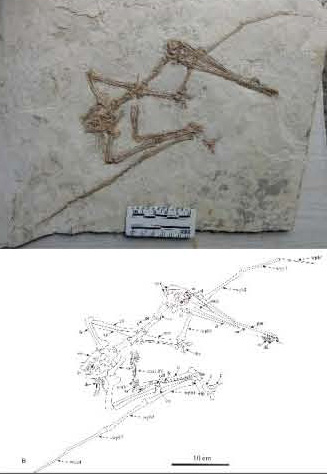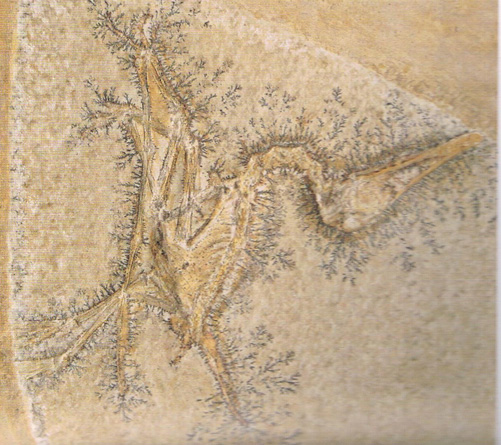Terrestrial Pterosaurs Outlined in New Research
Gladocephaloideus – Getting to Grips with Terrestrial Pterosaurs
Terrestrial pterosaurs might sound like a contradiction in terms, after all, pterosaurs are also referred to in popular culture as “flying reptiles”. However, a number of pterosaur families seem to have been better adapted to life on “Terra Firma” than other types. For example, some have stronger hind limbs, an adaptation indicating a substantial amount of time walking around rather than flying. Others have more robust extremities, once again, suggesting a more terrestrial existence.
Terrestrial Pterosaurs
Although scientists still debate how the Pterosauria Order should be structured, many pterosaur workers have united a number of families under the sub-group termed Lophocratia “crested heads”. Lophocratia (pronounced low-foe-kray-tia), consists of the more terrestrial adapted members of the Pterosauria and new research published in the on line, academic journal PLOS One is helping to re-define one group of flying reptiles – the Ctenochasmatoidea.
Fossils and a Line Drawing of the Pterosaur Gladocephaloideus
Picture credit: PLOS One
The Enigmatic Ctenochasmatoidea
The earliest of the Lophocratia pterosaurs are the ctenochasmatoids (pronounced sten-oh-kas-ma-toids) a globally distributed and very diverse group of flying reptiles. The very first pterosaur to be described, Pterodactylus, whose fossils come from the famous Solnhofen limestone deposits of Germany, has been assigned to this family and fossils of this type of flying reptile have been found in strata that varies tremendously in age. Ctenochasmatoids have been reported from Upper Jurassic deposits through to Lower Cretaceous deposits, representing a geological time span for the family of some fifty million years or so.
A team of Chinese scientists in collaboration with colleagues from the University of Bratislava (Slovak Republic), have published a paper on a recently discovered Gladocephaloideus jingangshanensis juvenile specimen that is helping to cement the Gladocephaloideus genus firmly within the Ctenochasmatidae.
The Jiufotang Formation
The fossil comes from the famous Lower Cretaceous strata of the Jiufotang Formation in Liaoning Province (north-eastern China). Although a total of nine ctenochasmatoids have been reported from this part of the world, making the Jehol Biota one of the most pterosaur rich ancient biotas currently known, most of the fossil specimens consists of either partial skulls or post-cranial material. This, the second fossil example of Gladocephaloideus jingangshanensis to be found, is nearly complete and as such it has allowed scientists to place the Gladocephaloideus genera firmly into the ctenochasmatoids as well as providing important clues as to how the family tree of these pterosaurs (the phylogeny) should be constructed.
For models of pterosaurs and other prehistoric creatures: PNSO Age of Dinosaurs.
A Juvenile Pterodactylus Fossil (Ctenochasmatoid Pterosaur)
Picture credit: Natural History Museum (London)
The researchers conclude that Gladocephaloideus is very probably a sister taxon to Pterofiltrus a Chinese pterosaur described in 2011.
As to the ecological niche occupied by this varied group, it has been suggested that these pterosaurs with their strange dentition may have filled the role of wading birds as found in modern ecosystems.
Visit Everything Dinosaur’s website: Everything Dinosaur.



